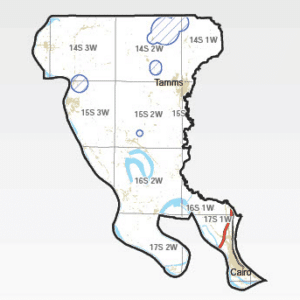Buying and Selling in Mine Subsidence Affected Areas
Transferring property during an ongoing mine subsidence claim
Ground movement from mine subsidence can last many years, sometimes a decade or more. By statute, all damage caused by a single mine subsidence event, or several subsidence events which are continuous, constitutes one occurrence. This means that if the insurance claim is still open, the company insuring the property when the occurrence began will continue to service the claim. In many instances homes are bought and sold while an active mine subsidence event is taking place. To facilitate that process, the seller and buyer may consider using an Assignment of Claim Rights. This is a legal document, which should be prepared by an attorney, and may be used to accomplish the following:
If, at the time of sale, the seller has not received any insurance payments for mine subsidence damage, the Assignment transfers seller’s rights regarding the covered loss to the buyer.
If the seller has received some payment, it may transfer the seller’s rights to future claim payments, up to the mine subsidence coverage limit and less any claim payments you have already received, to the buyer.
However, even after an Assignment of Claim Rights, the total amount payable per mine subsidence occurrence to both seller and buyer is subject to the mine subsidence limit on the insurance policy in force when the damage is first reasonably observable.
In addition to the Assignment of Claim Rights, the buyer should request the seller to provide the following information about the mine subsidence claim:
- The amount of mine subsidence insurance coverage on the date when the mine subsidence damage was first reasonably observable.
- The insurance company’s estimate of cost to repair mine subsidence damage.
- The amount of mine subsidence claim payments already received.

The Assignment of Claim Rights entitles the buyer to any future loss payments on an open claim. It is often a necessary component of the real estate transaction when a home is being affected by active mine subsidence. However, if the policy limit has been exhausted, or the full amount of damage has previously been paid to the seller, the buyer will not receive any additional payments.
If property is transferred during an ongoing mine subsidence claim, the seller and buyer should notify their respective insurance companies, and provide a copy of any Assignment of Claim Rights.
As previously noted, all damage caused by a single mine subsidence event, or several subsidence events which are continuous, constitutes one occurrence. With the permission of the new owner, the Fund will continue to survey the property annually, and advise when damaging ground movement ceases. When damaging ground movement ends and provided a valid assignment has been secured, a final damage estimate can be made, payment for any additional damage can be requested, and full repairs can begin. After completion of full repairs, in the unlikely event of new mine subsidence damage, such damage would be investigated as a new mine subsidence claim, subject to the limits of the policy in force at the time the new mine subsidence damage was first reasonably observable.
Disclosure Laws
There are two statutes in Illinois that pertain to disclosure during the sale of residential property with confirmed or suspected mine subsidence damage. Both the seller and buyer should be aware of these requirements, and discuss any mine subsidence related disclosure in detail.
Sec. 25 (b) The seller shall disclose material defects of which the seller has actual knowledge.
The Act requires completion of the Residential Real Property Disclosure Report, found in 765ILCS/35, which consists of questions pertaining to material defects in the property, with question 17 specifically addressing mine subsidence. The statute defines “material defect” as a condition that would have a substantial adverse effect on the value of the residential real property or that would significantly impair the health or safety of future occupants of the property, unless the seller reasonably believes that the condition has been corrected.
If the seller believes they have actual knowledge of past or present mine subsidence damage to the property, the seller should consult with an attorney about its obligation to disclose that information to prospective buyers.
The second disclosure law is contained in the Mine Subsidence Disclosure Act (765 ILCS 95/), which states:
Sec.3 (a) At the time an agreement to transfer real property is made, the transferor shall disclose in writing to the transferee and lender all insurance claims paid to the transferor for mine subsidence on the real property.
If the seller has received payment from their insurance company on a mine subsidence claim, whether for temporary repairs, an advance payment, or a final settlement payment, the seller should consult with an attorney about its obligation to disclose this information to the buyer and the buyer’s lender.
Since unrepaired damage may make the home ineligible for mine subsidence insurance coverage, the buyer may also wish to request the following from the seller:
- Letter from insurance company stating damaging ground movement has ended.
- Insurance company estimate of repair costs.
- Paid bills documenting repairs have been fully completed.
